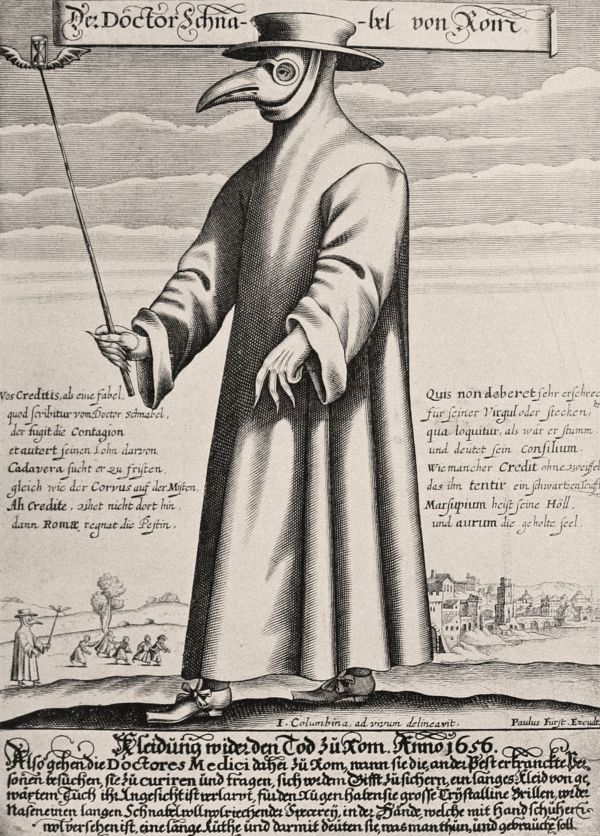Solving Your Cravings for Top- 10 Lists on the Creepy, the Mysterious, & Mind-boggling.

Top 10 Horrific Things Doctors Did Before Learning About Germ Theory
Before the late 19th century, the medical world was a vastly different and far more dangerous place. The concept of germs, microscopic organisms that could invade the body and cause illness, was entirely unknown. Doctors and surgeons, often seen as learned and respected figures, operated with a shocking lack of what we would now consider basic hygiene. Their understanding of disease was based on theories that seem utterly bizarre to us today, such as imbalances in the body’s “humors” or the influence of foul-smelling “miasmas.”

Top 10 Horrific Things Doctors Did Before Learning About Germ Theory
10 Corpse Medicine
In one of the most stomach-churning chapters of medical history, physicians in early modern Europe prescribed what is now known as “corpse medicine.” This wasn’t a fringe practice; it was a widely accepted form of treatment that saw remedies made from human flesh, bone, and blood sold in apothecaries and administered to patients from all walks of life. The thinking behind this ghoulish practice was a form of sympathetic magic – the belief that the vitality of a healthy, recently deceased person could be transferred to the sick.
The most sought-after remedies came from the bodies of young, healthy individuals who had met a sudden, violent end, such as executed criminals or soldiers killed in battle. It was believed their life force was still potent. Everything from ground-up skulls used to treat migraines to human fat made into ointments for aches and pains was on the table. Even the blood of freshly executed criminals was collected and drunk as a cure for epilepsy. This macabre form of medicine finally began to wane in the 18th century as the Enlightenment brought a more scientific and less superstitious approach to healing.
9 Bloodletting
For over two millennia, from ancient Greece until the late 19th century, bloodletting was one of the most common medical procedures performed. The practice was based on the ancient theory of the four humors – blood, phlegm, yellow bile, and black bile – which were believed to need to be in perfect balance for a person to be healthy. If a patient was ill, it was often assumed they had an excess of blood, and the solution was to simply let some of it out.
This was done in a variety of ways, from using a sharp lancet to open a vein (venesection) to the application of leeches. The amount of blood removed could be substantial, often until the patient fainted, which was seen as a sign that the treatment was working. Bloodletting was used to treat an astonishingly wide range of ailments, from fevers and infections to headaches and melancholy. Of course, we now know that this practice was at best useless and at worst, deadly, as it could weaken an already sick patient, leading to shock or even death.
8 Mummy Powder
A close cousin to corpse medicine, the use of “mummy powder” or “mumia” was a popular remedy in Europe for centuries. The practice originated from a misunderstanding. Bitumen, a naturally occurring black, sticky substance, was believed to have medicinal properties. When Europeans first encountered ancient Egyptian mummies, they mistakenly believed the dark resin used in the embalming process was bitumen. This led to the belief that the mummies themselves possessed healing powers.
Soon, a gruesome trade developed, with Egyptian mummies being plundered from their tombs, ground into a powder, and sold in European apothecaries. The powder was prescribed for a wide array of conditions, including headaches, stomach ulcers, and as a general pain reliever. When the supply of genuine ancient mummies began to dry up, enterprising forgers would create their own “mummies” from the bodies of recently deceased criminals or paupers, embalming them and passing them off as the real thing.
7 Animal Dung Ointments
In an era before antibiotics, doctors had to get creative with their remedies, and this sometimes led them to some truly disgusting ingredients. Animal dung, for example, was a surprisingly common component in medical treatments for centuries. The logic behind this practice varied. In some cases, it was believed that the foul smell of the dung would drive away the evil spirits or “miasmas” thought to cause disease. In others, it was simply a matter of using what was available.
Different types of dung were thought to have different therapeutic properties. For instance, the white part of dried dog dung, known as album graecum, was used to treat sore throats, while crocodile dung was used as a form of contraceptive. While it may seem utterly repulsive to us today, modern science has shown that some types of animal dung do contain antimicrobial substances produced by the animal’s gut bacteria, so there may have been a tiny grain of efficacy in this otherwise revolting practice.
6 Trepanation
Trepanation, the practice of drilling or scraping a hole into the human skull, is one of the oldest surgical procedures known to humanity, with evidence of its use dating back to the Neolithic era. The reasons for performing this drastic procedure are still debated by historians and archaeologists, but it’s believed to have been used for both medical and mystical purposes. In some cases, it may have been a surprisingly rational treatment for head injuries, intended to relieve pressure on the brain or remove shattered pieces of bone.
However, trepanation was also likely performed to “cure” a variety of other ailments, including seizures, migraines, and mental illness. The underlying belief was that these conditions were caused by evil spirits trapped inside the head, and that drilling a hole in the skull would allow them to escape. Remarkably, many people seem to have survived the procedure, as evidenced by skulls that show signs of healing around the edges of the hole. Still, the thought of having one’s skull drilled open without anesthesia is enough to make anyone cringe.
5 Mercury Cures
Mercury, the only metal that is liquid at room temperature, has fascinated people for centuries. Its unique properties led many ancient and medieval physicians to believe it had powerful medicinal qualities. As a result, mercury was used to treat a vast range of illnesses, most famously syphilis. The saying “a night with Venus, a lifetime with Mercury” grimly summed up the fate of many who contracted the sexually transmitted disease.
The treatments were horrific. Patients were given mercury in various forms, including ointments that were rubbed into the skin, pills that were swallowed, and even steam baths where they would inhale the toxic fumes. While mercury can kill the bacteria that causes syphilis, it is also a potent neurotoxin. The “cures” often led to severe side effects, including tooth loss, tremors, and severe neurological damage, a condition known as “mad hatter’s disease.” In many cases, the treatment was far worse than the disease itself.
4 Surgical Filth
Before Joseph Lister pioneered the use of antiseptics in the 1860s, the operating theater was a place of unimaginable filth. Surgeons had no concept of germs and therefore took no precautions to prevent infection. In fact, a surgeon’s blood- and pus-stained operating coat was often seen as a badge of honor, a sign of their experience. Instruments were rarely washed between patients, and surgeons would often hold the knife in their teeth or a buttonhole of their coat during a procedure.
The result was that even a minor surgical procedure carried a high risk of death from infection. Wards were filled with the stench of gangrene, and post-operative mortality rates were shockingly high. Patients who survived the initial surgery would often succumb to what was then called “ward fever” a few days later. The idea that a surgeon should wash their hands before operating was considered radical and even offensive by many in the medical establishment, who couldn’t believe that a gentleman’s hands could be unclean.
3 Childbed Fever
For centuries, childbirth was a perilous event for women, and one of the most feared complications was puerperal fever, or “childbed fever.” This devastating illness would strike women within a few days of giving birth, causing high fever, severe abdominal pain, and often, a swift and agonizing death. The cause of childbed fever was a mystery, and it wasn’t until the mid-19th century that a Hungarian doctor named Ignaz Semmelweis made a crucial breakthrough.
Semmelweis noticed that the mortality rate from childbed fever was much higher in the hospital ward where medical students delivered babies than in the ward where midwives attended births. He also observed that the medical students would often come directly from the autopsy room to the delivery ward without washing their hands. He hypothesized that they were carrying “cadaverous particles” from the corpses to the new mothers. When he instituted a policy of mandatory handwashing with a chlorine solution, the mortality rate plummeted. Tragically, Semmelweis’s findings were largely ignored by the medical community, and it would be decades before his life-saving discovery was widely accepted.
2 Urine Therapy
The use of urine as a medicine, both internally and externally, has a long and rather unpleasant history. In ancient Rome, it was so valued as a cleaning agent that there was a tax on it. Physicians throughout history have also prescribed urine as a treatment for a wide variety of ailments. It was believed to have antiseptic properties, and was used to clean wounds and treat skin conditions. Some even advocated drinking it as a cure for everything from a sore throat to the plague.
The belief in the curative powers of urine was based on the idea that it contained vital life-giving substances. While we now know that urine is mostly water and waste products, this didn’t stop people from using it as a go-to remedy for centuries. In fact, the practice has seen a resurgence in some alternative medicine circles today, a testament to the enduring power of some very old, and very strange, medical beliefs.
1 Tobacco Smoke Enemas
Perhaps one of the most bizarre and ill-conceived medical treatments in history was the tobacco smoke enema. In the 18th century, tobacco was a relatively new and exciting substance from the Americas, and physicians were eager to explore its potential medicinal uses. One of the most popular applications was in the resuscitation of drowning victims. It was believed that blowing tobacco smoke into the rectum would warm the victim’s body and stimulate respiration.
Special kits were even developed for this purpose, consisting of a bellows and a tube, and were placed at various points along the River Thames in London. The practice was so common that it was immortalized in popular culture and medical texts of the time. Eventually, as the toxic effects of nicotine became better understood, the tobacco smoke enema fell out of favor. It remains a striking example of how even the most well-intentioned medical practices can go horribly wrong in the absence of scientific evidence.
Sources:
10 https://www.aamc.org/news/grave-errors-spooky-cures-and-creepy-medical-missteps-past
9 https://www.aotm.gov.pl/en/scientific-achievements-and-medical-technologies/history-of-medical-technology/the-history-of-blood-letting-in-medicine/
8 https://www.sciencehistory.org/stories/magazine/mummies-and-the-usefulness-of-death/
7 https://muvs.org/en/contraception/barriers/crocodile-or-elephant-dung-id2519/
6 https://en.wikipedia.org/wiki/Trepanning
5 https://www.psychologytoday.com/us/blog/psychiatry-a-history/202304/heavy-metal-blues-the-history-of-medicinal-mercury
4a https://www.hartfordstage.org/stagenotes/ether-dome/history-of-surgery
4b https://www.ncbi.nlm.nih.gov/books/NBK481552/
3 https://pmc.ncbi.nlm.nih.gov/articles/PMC1088248/
2 https://docquity.com/articles/peculiar-medical-treatments-of-the-past/
1 https://www.aamc.org/news/grave-errors-spooky-cures-and-creepy-medical-missteps-past

